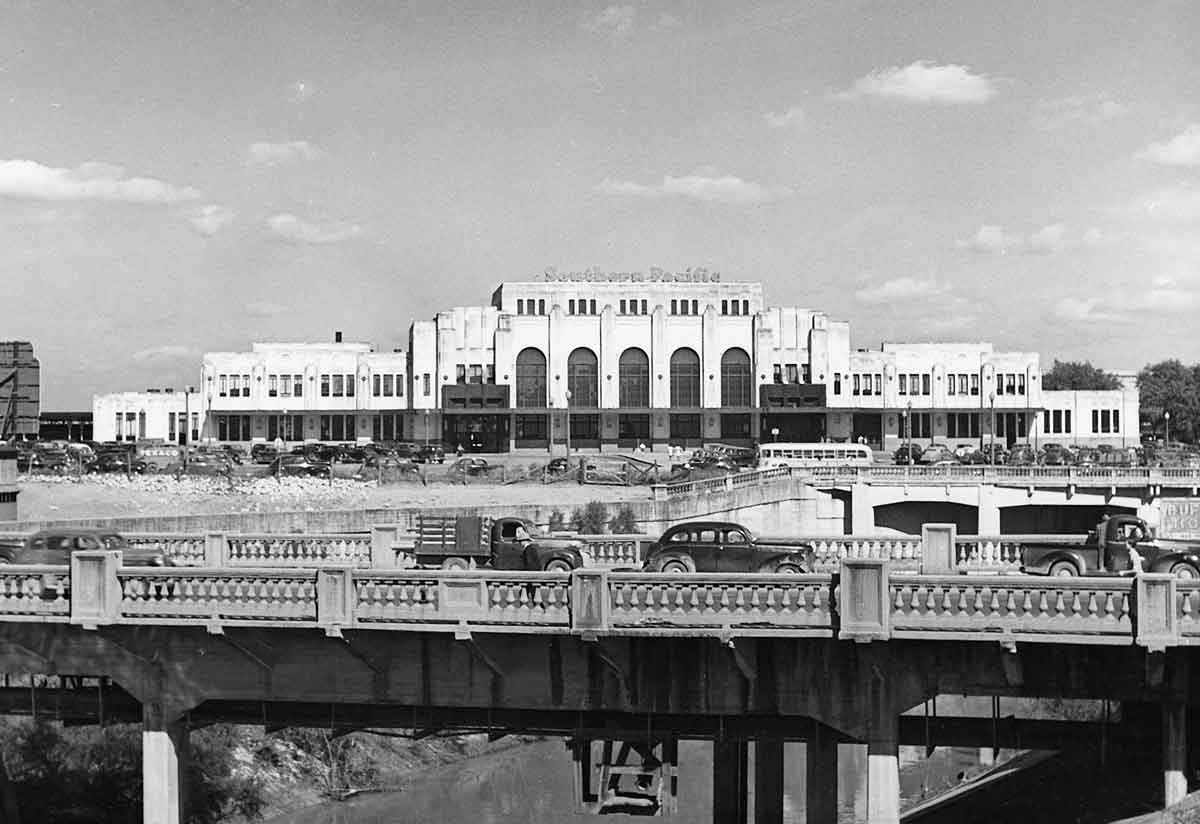Texas' Historic Railroad Stations: From Bustling Depots to Modern Roles

Houston's Southern Pacific Terminal operated from 1934 to 1959 before being sold to the U.S. Post Office. Today the location is the home of the POST Houston entertainment venue.
Texas' rich railroad history is epitomized by its numerous historic train stations, which once served as bustling hubs for passenger travel and freight operations. Over time, the evolution of the rail industry has shifted operations away from these traditional depots toward specialized facilities catering to modern freight needs. This transformation has led to various fates for the state's historic stations—some have been repurposed, others continue to serve passengers, while others have been lost to time.
The Golden Age of Texas Train Stations
In the late 19th and early 20th centuries, train stations were central to Texas communities. They facilitated passenger travel and were pivotal in transporting goods, contributing significantly to local economies. Stations like the Kyle Train Depot and the Grapevine Depot are testaments to this era, showcasing classic architectural designs and serving as community landmarks. Some, like Fort Worth's T&P Station and Houston's Union Station (now park of the Astros' Daikin Park stadium) dominate their respective skylines.
Evolution of Rail Operations: From Depots to Intermodal Facilities
As transportation technology and logistics demands evolved, railroads adapted by shifting focus from traditional depot services to more efficient freight solutions:
-
Intermodal Services: Railroads now emphasize intermodal transport, integrating multiple transportation modes to streamline the movement of goods. For instance, BNSF Railway offers intermodal services connecting Seattle/Portland and Dallas/Fort Worth, providing efficient shipping options across the state.
-
Transloading Facilities: To accommodate diverse freight needs, transloading facilities have become essential. These sites allow goods to be transferred between different transportation modes, such as from rail to truck. Texas hosts numerous transloading facilities, such as those in Sunray and Gonzales, enhancing the state's logistics capabilities.
- Passenger Intermodal: Despite the repurposing of historic stations, Texas continues to build new passenger terminals. These often serve new positions in downtowns following modern urban development patterns. Fort Worth Central Station opened in 2002 to channel passenger traffic to the eastern corner of its downtown area and allow for connections to bus and commuter rail service. This station still serves the Texas Eagle and Heartland Flyer for Amtrak.
The Fate of Historic Texas Train Stations
The transition in rail operations has led to varied outcomes for Texas' historic train stations:
-
Repurposed Stations: Many stations have found new life serving community needs. The Post Station, for example, was repurposed to house the local Chamber of Commerce in 2011, preserving its historical significance while providing functional space. Many small depots now act as chamber of commerce offices and local museums. Perhaps the most famous "repurposed" stadium is Houston's Union Station which now acts as the entrance to Daikin Field where the Houston Astros play. Opened in 1911, Union Station was one of the major hubs of the U.S. railroad network with 17 railroads serving passengers. The station's last train departed in 1974 but it reopened for its new baseball-focused activities in 2000.
-
Demolished Structures: Some stations, unable to find new purposes or secure preservation funding, have been demolished. Houston's Southern Pacific station, pictured above, initially opened as a Grand Central Station in 1887, rebuilt into the structure seen above in 1934, sold to the U.S. Post Office in 1959 where it acted as Downtown Houston's Main Post Office. Today this area is the entertainment venue POST Houston.
-
Preserved and Operational Stations: A select few stations continue to serve their original purpose or have been preserved as museums. The Red River Railroad Museum, located in the old Katy Depot near downtown Denison, showcases historic train equipment and offers interactive exhibits, keeping the railroad heritage alive for visitors. Some stations continue their historic roles. In downtown Fort Worth, the Texas & Pacific Station continues to serve DFW-area commuter rail operations with two tracks operational and serving TexRail and Trinity Railway Express. Dallas' Eddie Bernice Johnson Union Station, which opened in 1916, was rebuilt in 1996 and reopened in 2010. Today its seven tracks serve Amtrak's Texas Eagle, the Trinity Railway Express, DART service, and provide two Union Pacific thru-lines.
Texas' historic railroad stations are emblematic of the state's dynamic relationship with rail transportation. While the nature of rail operations has transformed to meet contemporary demands, these stations remain as cultural touchstones. Their varied fates—repurposed, preserved, or demolished—highlight the ongoing conversation between progress and preservation, reminding us of the importance of railroading's history and future in Texas.
|


